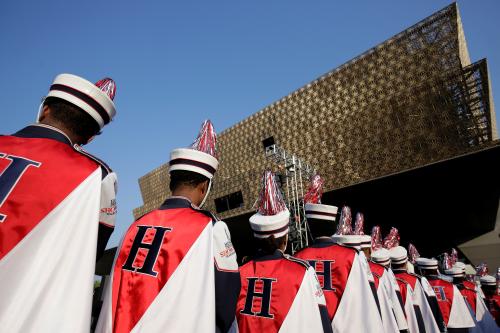The economic security of America’s families is a central concern for policymakers. Benchmarks for economic security include employment, homeownership, savings and retirement security, and financial literacy. These indicators broadly characterize middle-class status and, for many, attaining and sustaining a life in the middle-class is among the most important measures of economic success. Indeed, a robust middle class is both a hallmark of aggregate economic health and the manifestation of the American dream.
Access to the American middle class has been made possible by expanding educational attainment over the 20th Century. The role of higher education in economic mobility is well established. Presently, access to post-secondary educational opportunities—especially a 4-year college degree—is increasingly seen as requisite for success in an economy that requires advanced analytical ability, facility with computers, and stronger inter-cultural communication skills. More open to question is how equitable access to higher education is, particularly during a period of sharp increases in cost of attendance. Many policy interventions, including Pell grants and subsidized student loans, have sought to reduce socioeconomic gaps in college entrance and completion. Nonetheless, equity of access to college and the opportunities it provides is a central concern in policy discussions at the intersection of education and the economy. At the moment, colleges and universities are also being roiled by the COVID-19 pandemic, with worrying prospects for equity of access and educational outcomes.
In this report, we provide some recent historical context relevant for considering the value of post-secondary education in providing access to the middle class. We look back over the past 40 years to assess the role college education has played in shaping entry into and persistence in the middle class for American households. Using data from the Panel Study of Income Dynamics (PSID) between 1980 and 2017, we study entry into and out of the middle class, and the role of education as determinant of a middle-class stability. We also examine how demographic factors interact with education to predict entry into and exit out of the middle class.
To assess how the role of college education as a bridge to middle-class status may have changed over this period, we form five cohorts from the PSID. First, we identify all households headed by an adult between the ages of 25 and 64 in 1980. We then assess the role of education and other attributes of the household as predictors of middle-class status in 1980. Next, we follow these households for 7 years to determine whether households with college-educated heads are more likely to maintain their status in the middle class over time. We then repeat this process with cohorts of households beginning in 1989, 1999, 2005 and 2011.
We find that overall middle-class stability falls over time, and that college education does not necessarily cushion against instability within the middle class. Shown in Figure 2, the proportion of middle-class families who remain in the middle class falls from roughly 62 percent to 49 percent (1980 – 1986) through the first 7-year interval of our analysis, and more recently (2011 – 2017) falls from roughly 60 percent to 50 percent. This stylized fact generally holds throughout the 1980s, 1990s, and 2000s. Importantly, some families leave the middle class because their incomes fall, and are subsequently below middle-class status, whereas others experience income growth, climbing up and out of the middle class.
Households with college-educated heads are more likely to have income at or above the middle-class, while heads with less than a college degree are increasingly within the bottom quintile of the income distribution. And, to the degree that college education secures a middle-class lifestyle, it appears to be at the expense of position in the top quintile of the income distribution. For example, by the 2010s, the share of families with a college-educated head who fall down and out of the middle-class rises from 18.6 percent to 24 percent. Concurrently, a similar share of middle-class, college educated families experience income growth, rising up and into the top quintile.
| The Impact of College on Attaining and Maintaining Middle Class Status By Race of Household Head | ||
| Household Head Race | ||
| Black | Non-Black | |
| Likelihood of Being Middle Class | 0.569 | 0.618 |
| Impact of College on Likelihood of Being Middle Class | ||
| In 1980 | 0.118* | -0.138* |
| In 2011 | 0.086* | -0.105* |
| Impact of College on Likelihood of Leaving Middle Class | ||
| By Falling Out | ||
| In 1980 | -0.033 | -0.033 |
| In 2011 | 0.023 | -0.018 |
| By Rising Out | ||
| In 1980 | 0.096* | -0.01 |
| In 2011 | -0.009 a | 0.03 |
| * Statistically significant at the 5% level | ||
| a. Statistically different from 1980, at 5% level | ||
Finally, we document important differences in the role of college attainment for middle-class stability across race. Namely, we find that college education positively predicts middle class status among Black households and top quintile status among non-Black households. Also, whereas college attainment operated as a channel for Black households to move up and out of the middle class in the 1980s, this upward channel appears to have weakened throughout the 2010s.
The authors did not receive financial support from any firm or person for this article or from any firm or person with a financial or political interest in this article. The authors are not currently officers, directors, or board members of any organization with a financial or political interest in this article.







